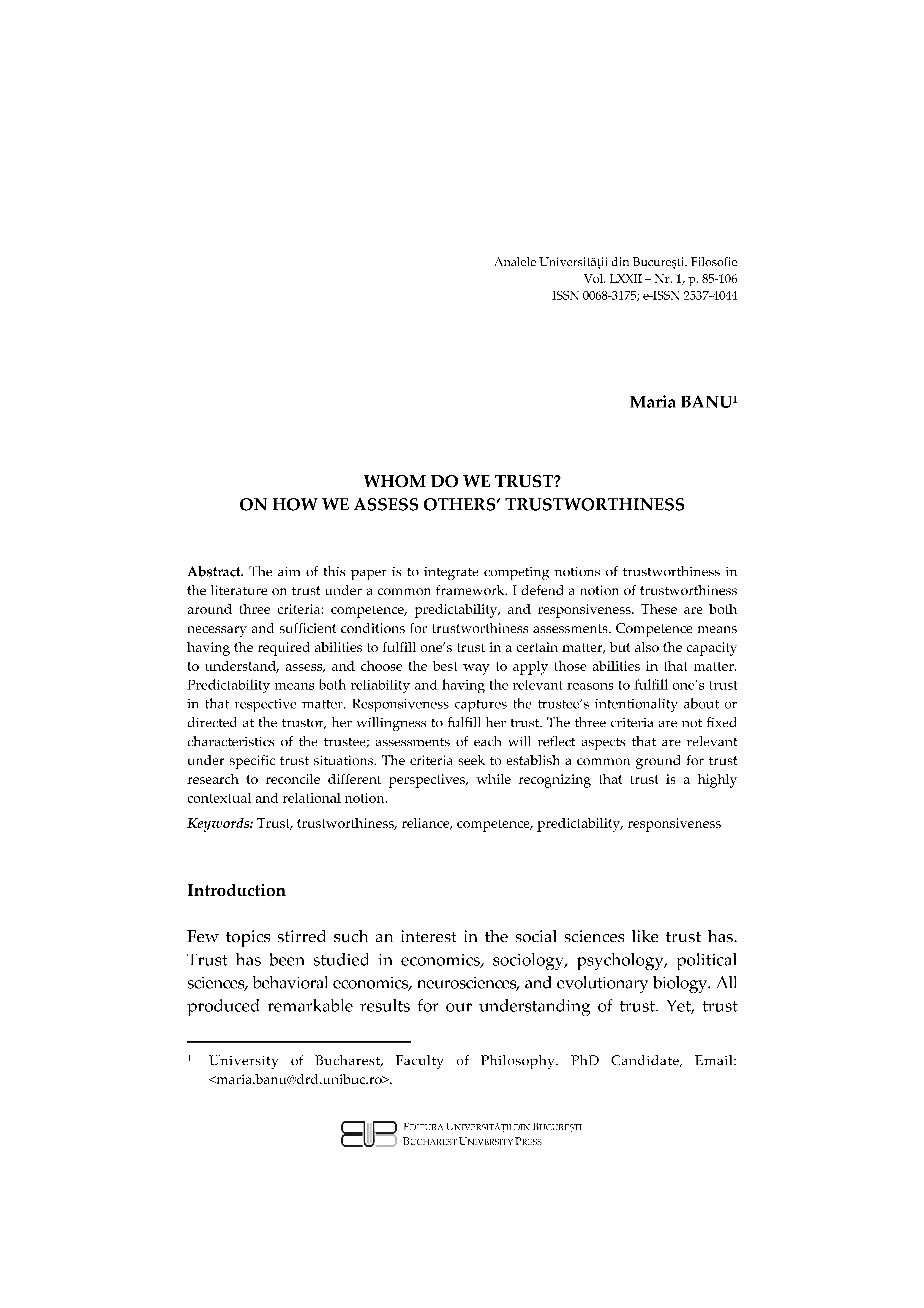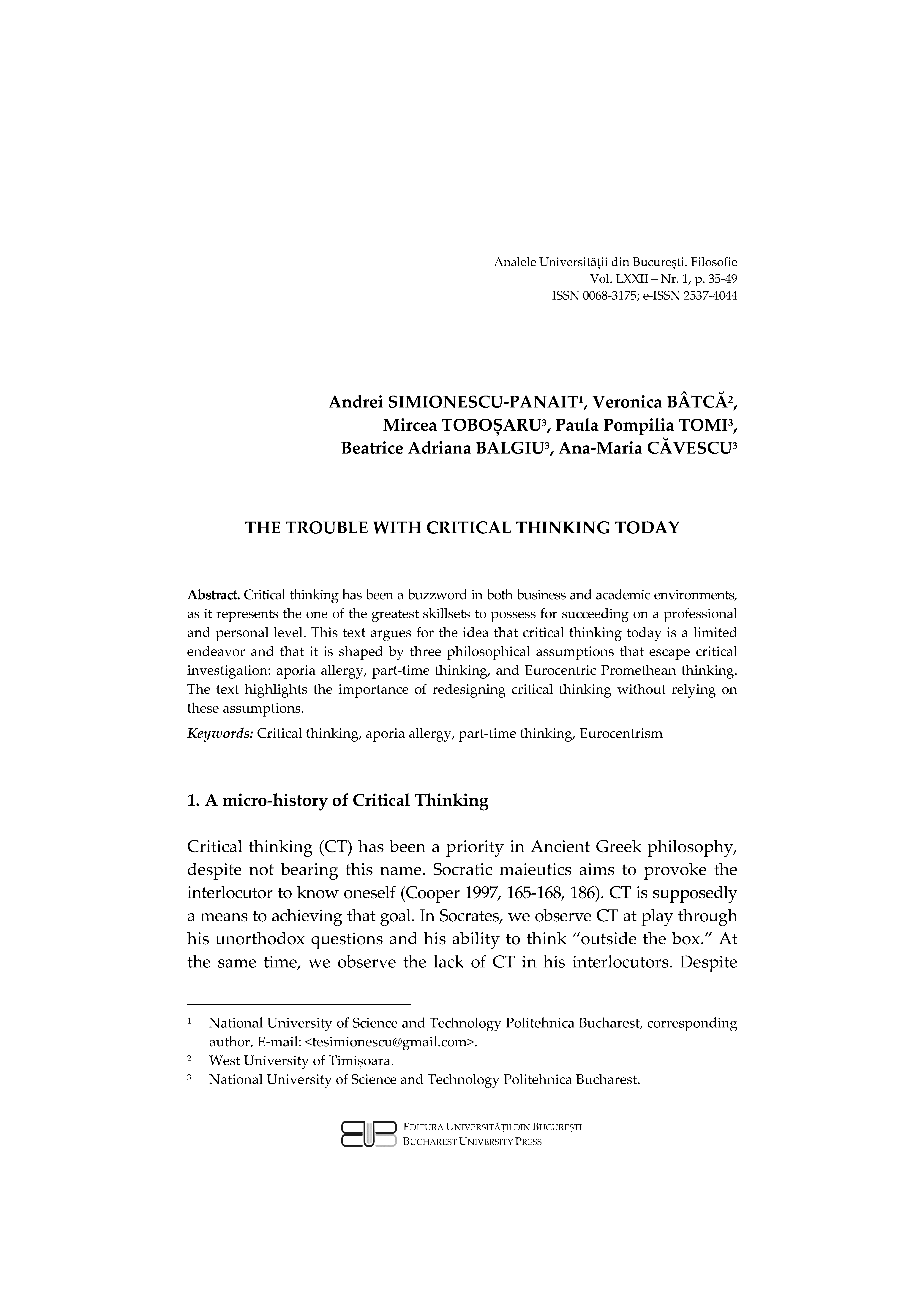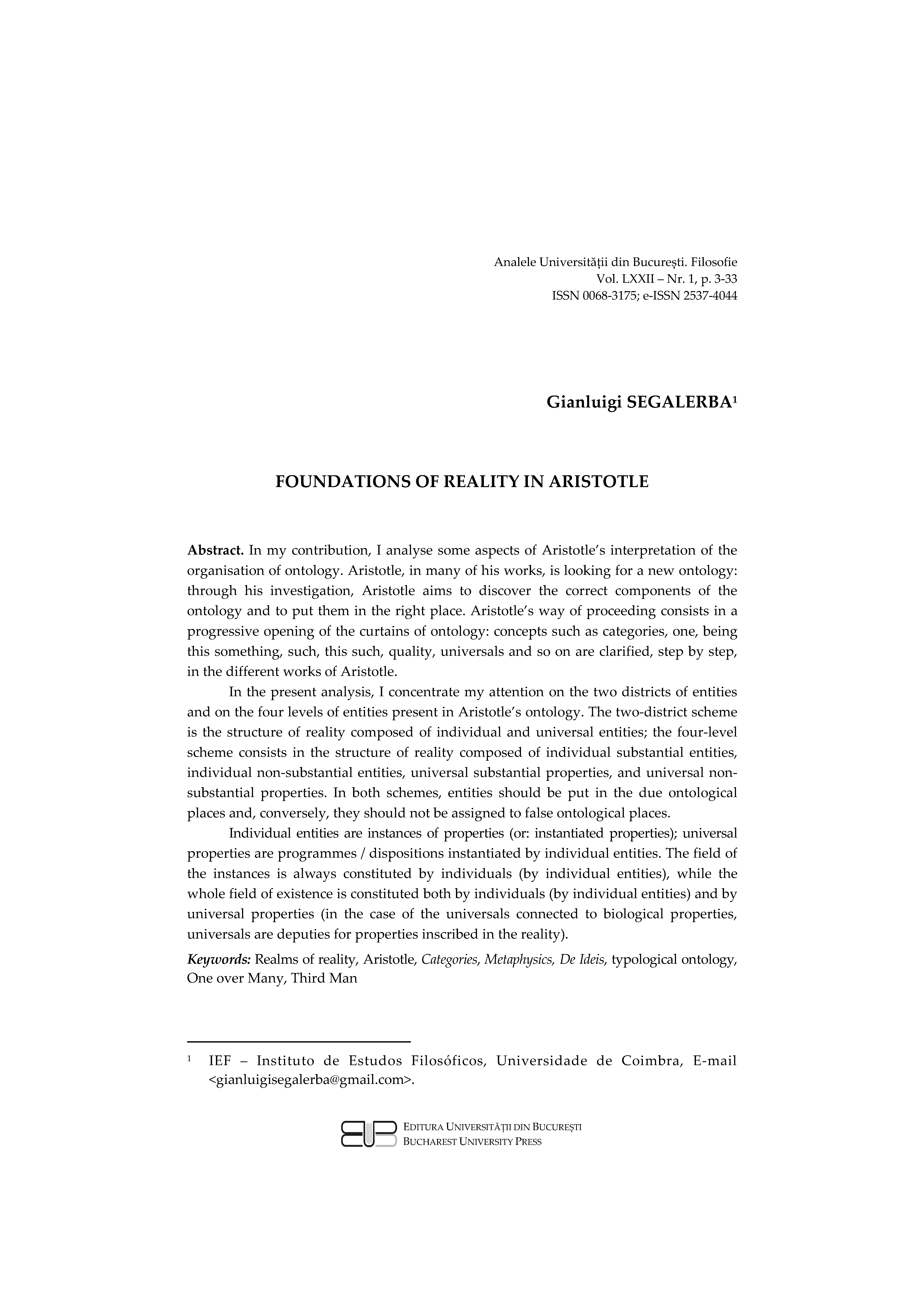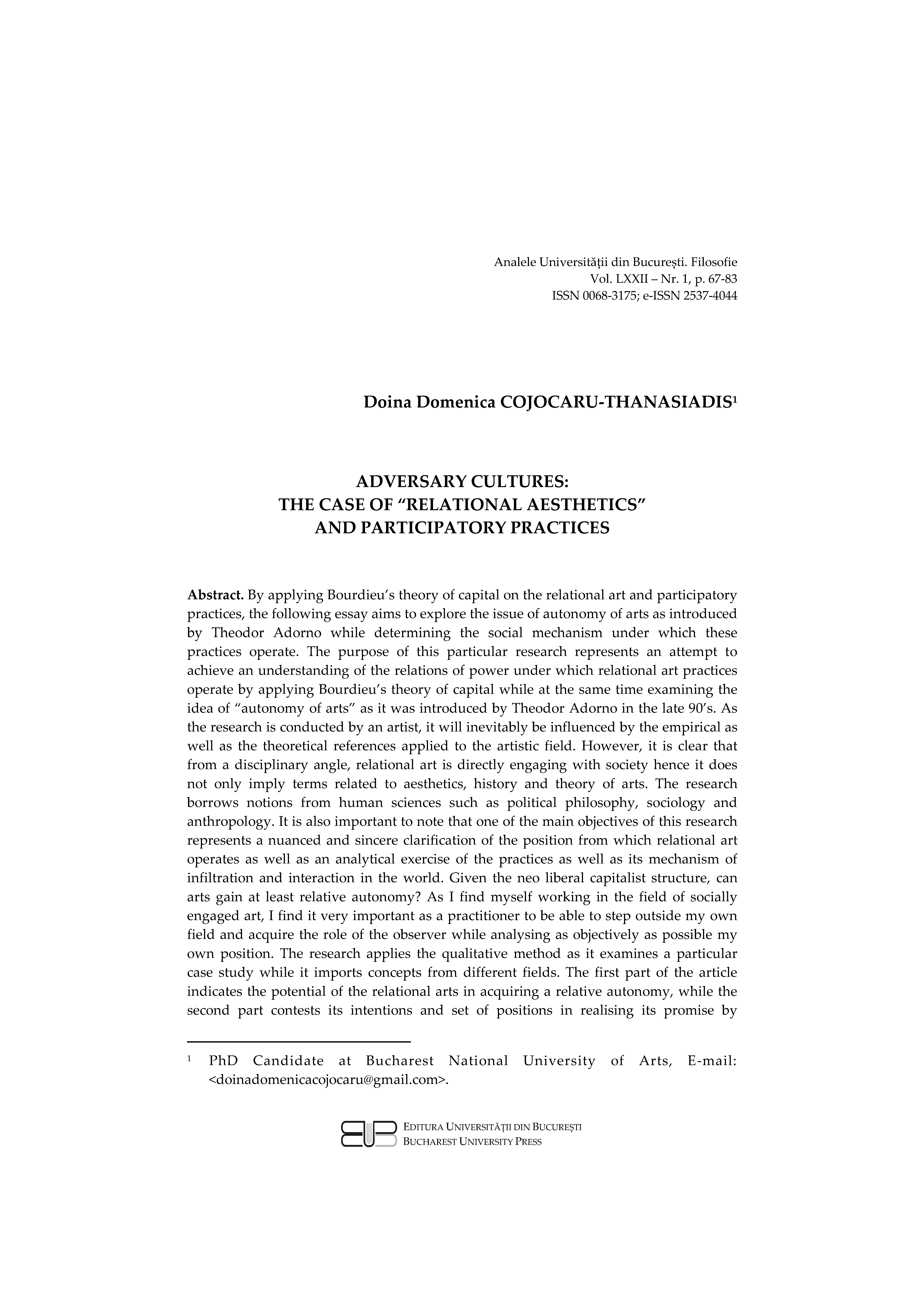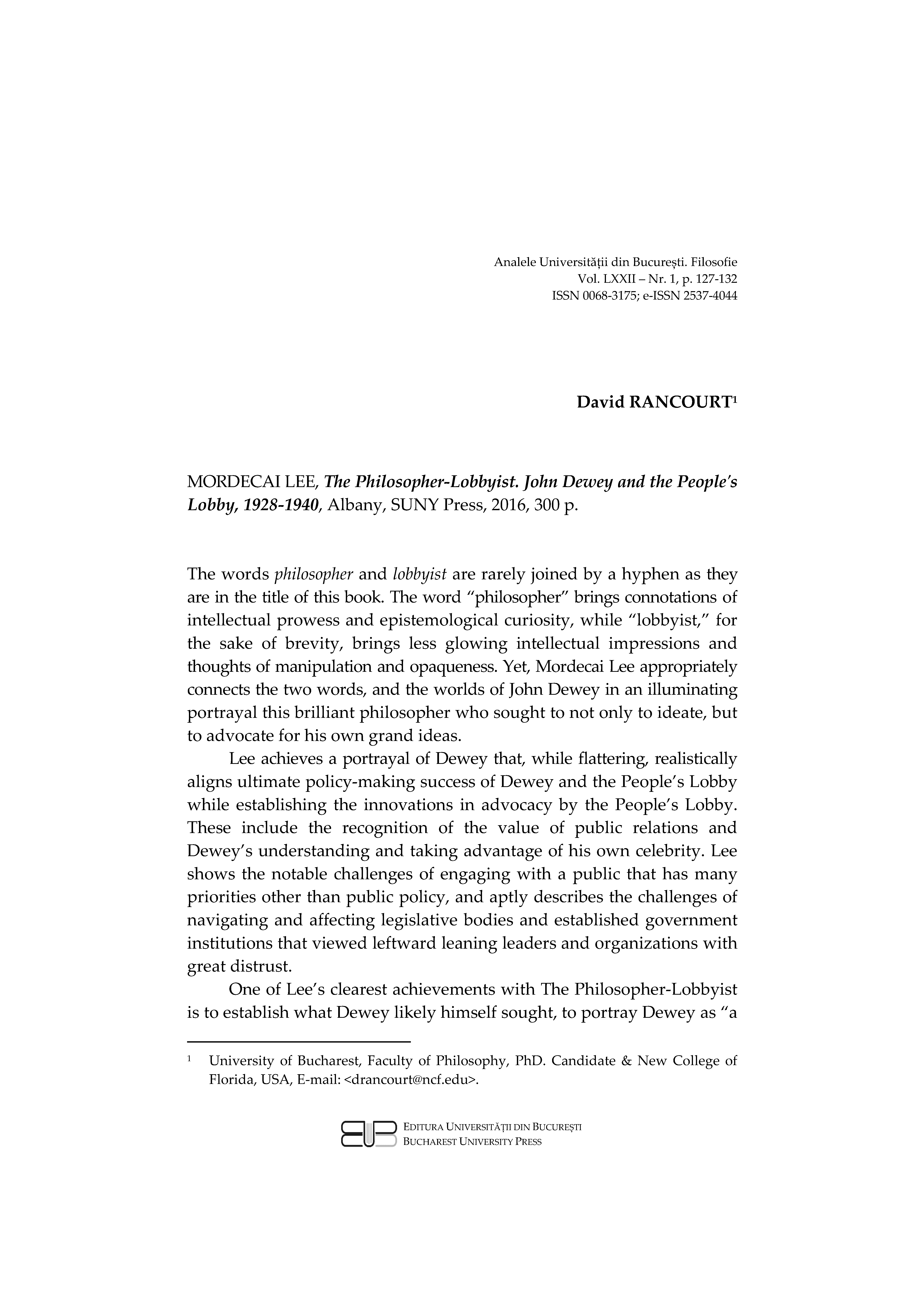Vol. 72 No. 1 (2023): The Annals of the University of Bucharest, Philosophy Series

The journal publishes articles considered of relevance for those interested in the field of philosophy and is addressed both to the romanian and international philosophical community, with a special accent on East- and Central-European area. The journal is published by the University of Bucharest, Faculty of Philosophy. The Annals of the University of Bucharest. Philosophy Series, is devoted to the exploration of different topics of Philosophy.
Published:
2024-10-03

